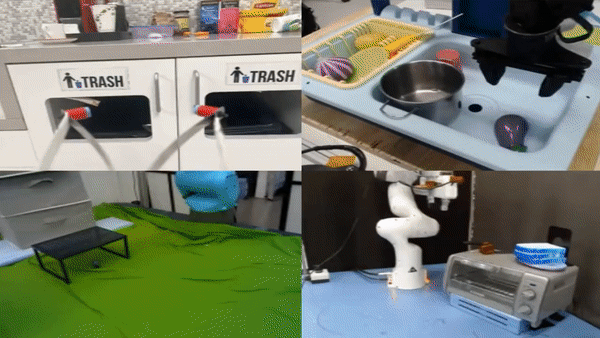Google DeepMind Releases Open X-Embodiment that Includes a Robotics Dataset with 1M+ Trajectories and a Generalist AI Model (𝗥𝗧-X) to Help Advance How Robots can Learn New Skills
The latest advancements in the fields of Artificial Intelligence and Machine Learning have demonstrated the ability of large-scale learning from varied and vast datasets for developing extremely effective AI systems. The best examples are the creation of general-purpose pretrained models, which frequently outperform their narrowly specialized counterparts trained on smaller, task-specific data. When compared to models trained on specialized and constrained data, open-vocabulary image classifiers and big language models have shown greater performance.
However, collecting comparable datasets for robotic interaction is challenging, in contrast to computer vision and natural language processing (NLP), where big datasets may be easily accessed from the internet. Even the most extensive data-gathering initiatives in robotics often yield far smaller and less diversified datasets than those in vision and NLP benchmarks. These datasets frequently concentrate on certain locations, items, or restricted groups of tasks.
To overcome the obstacles in robotics and move towards a massive data regime akin to what has worked in other fields, a team of researchers has proposed a solution inspired by the generalization achieved by pretraining large vision or language models on diverse data. The team has shared that X-embodiment training, which makes use of data from many robotic platforms, is necessary for developing generalizable robot policies.
The team has shared their Open X-Embodiment (OXE) Repository, which includes a dataset featuring 22 different robotic embodiments from 21 institutions, along with open-source tools to facilitate further research on X-embodiment models. This dataset demonstrates over 500 skills and 150,000 tasks across over 1 million episodes. The main aim is to demonstrate that policies that have been learned using data from different robots and surroundings can gain from positive transfer and perform better than those that have only been trained using data from one particular assessment setup.
The researchers have trained the high-capacity model RT-X on this dataset. Their study’s main finding is that RT-X shows positive transfer. By utilizing the knowledge learned from various robotic platforms, the model’s training on this broad dataset enables it to enhance the capabilities of multiple robots. This finding implies that it is feasible to create generalist robotics rules that are flexible and effective in a variety of robotic contexts.
The team has used a wide-ranging robotics dataset to train two models. The big vision-language model RT-2 and the effective Transformer-based model RT-1 were trained to produce robot actions in a 7-dimensional vector format representing position, orientation, and gripper-related data. These models are made to make it easier for robots to handle and manipulate objects. They may also allow for better generalization over a wider range of robotic applications and scenarios.
In conclusion, the study discusses the idea of combining pretrained models in robotics, much like how NLP and computer vision have done so successfully. Their experimental findings show the potential efficacy of these generalist X-robot strategies in the context of robotic manipulation.
Check out the Colab (vis / download / data loaders), Paper, Project, and Reference Article. All Credit For This Research Goes To the Researchers on This Project. Also, don’t forget to join our 31k+ ML SubReddit, 40k+ Facebook Community, Discord Channel, and Email Newsletter, where we share the latest AI research news, cool AI projects, and more.
If you like our work, you will love our newsletter..
![]()
Tanya Malhotra is a final year undergrad from the University of Petroleum & Energy Studies, Dehradun, pursuing BTech in Computer Science Engineering with a specialization in Artificial Intelligence and Machine Learning.
She is a Data Science enthusiast with good analytical and critical thinking, along with an ardent interest in acquiring new skills, leading groups, and managing work in an organized manner.
Credit: Source link


Comments are closed.